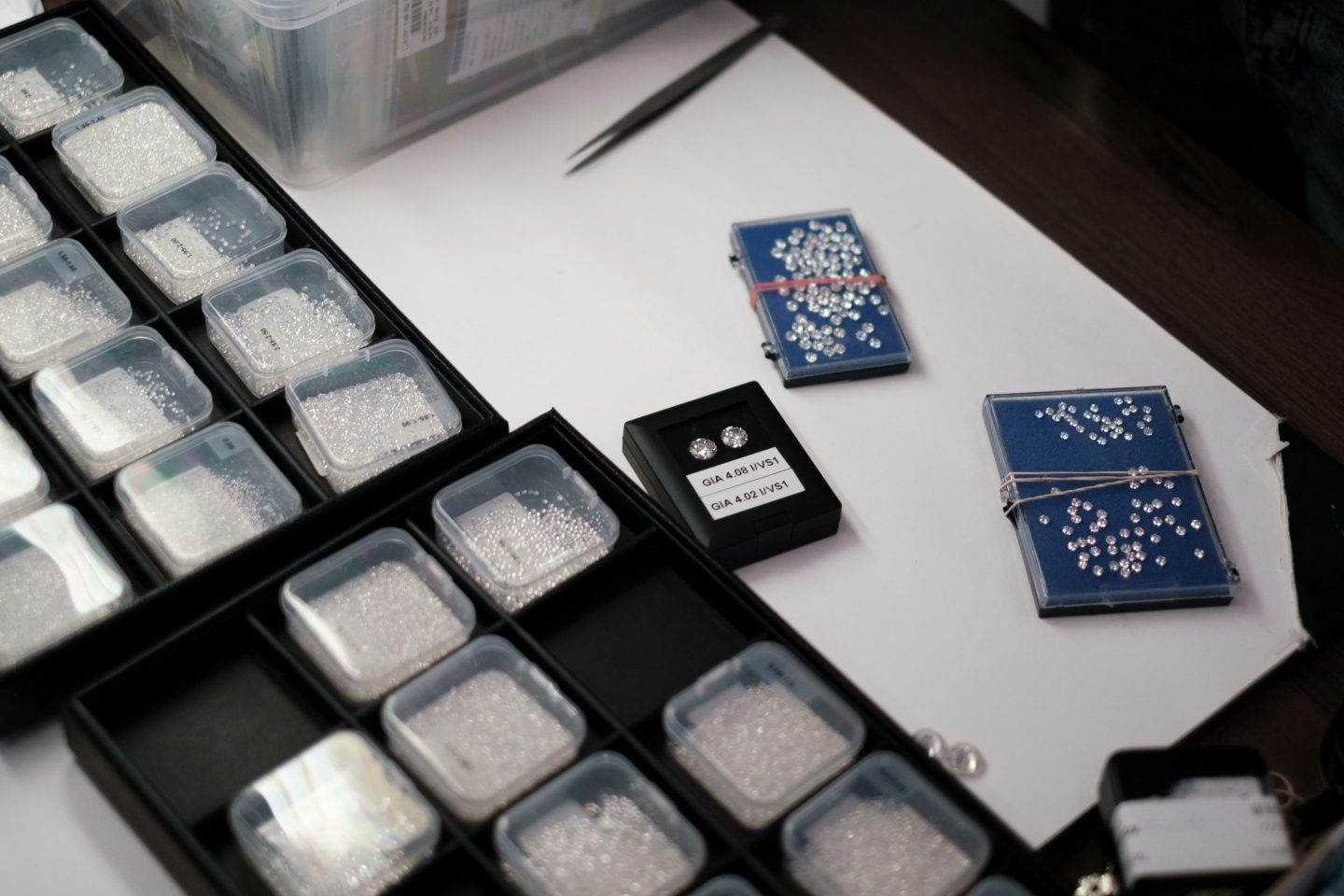
Diamonds, long revered as symbols of status and love, have traditionally been mined from deep beneath the earth’s surface. However, a seismic shift is occurring within the diamond industry, driven by technological advancements and a growing awareness of ethical concerns. Leading this revolution are lab-grown diamonds, identical to mined ones but produced in controlled lab environments with advanced technology.
In this article, we explore why industry leaders are favoring lab-grown diamonds as the top choice for custom jewelry.
Understanding Lab-Grown Diamonds
Lab-created diamonds are produced in a controlled setting rather than extracted from the earth. They share the same hardness, chemical makeup, and brilliance as natural diamonds, with no distinguishable differences. Although their formation processes differ significantly, these stones are estimated to account for nearly 50% of diamond sales, according to Grown Brilliance.
Unlike natural diamonds that take millions of years to form, lab-grown diamonds can be created in a matter of weeks. The process mimics the natural conditions deep within the earth where diamonds form, using intense heat and pressure to transform carbon. Lab-grown diamonds are produced through either the High-Pressure High-Temperature (HPHT) method or Chemical Vapor Deposition (CVD).
In CVD, a gas that is rich in carbon is exposed to plasma, which causes the carbon atoms to deposit on a substrate layer by layer. However, HPHT involves compressing carbon within a high-pressure chamber and heating it to extremely high temperatures. Both methods result in the formation of diamonds with the same crystalline structure and properties as their mined counterparts.
Lab-grown diamonds provide a compelling choice over natural diamonds. They offer a more eco-friendly alternative, as they avoid the environmental damage linked to traditional diamond mining. Additionally, they tend to be more budget-friendly, making them a viable option for a broader audience.
How resistant are lab-grown diamonds to scratching and wear?
Both types of diamonds are exceptionally strong. They both rank the highest on the Mohs scale of hardness. This means they’re equally resistant to scratches and wear, making them perfect for long-lasting jewelry.
Environmental and Ethical Benefits
Lab-grown diamonds are a more sustainable and ethical choice compared to real diamonds. Their production causes minimal land disruption and avoids large-scale mining, preventing habitat destruction and soil erosion. Also, these diamonds reduce the carbon footprint of diamond mining, which can be substantial.
The International Gem Society reported that mining companies move about 250 tons of earth per carat of diamond, using substantial fossil fuels. This process contributes to greenhouse gas emissions. In addition, maintaining these facilities releases about 160 kg of greenhouse gasses per polished carat of a mined diamond.
Cost-Effectiveness and Value
Lab-grown diamonds offer a compelling alternative to mined diamonds in terms of cost-effectiveness and value. Mined diamonds face price fluctuations due to supply and demand, while lab-manufactured diamonds are produced at more consistent, predictable costs. For consumers looking for high-quality jewelry at a lower price point, these diamonds are an excellent choice.
Further, these diamonds can offer great value for their price. The technology behind lab-grown diamonds has evolved, making them better and more accessible. This has reduced prices, allowing buyers to acquire larger, more impressive lab-grown diamonds at the cost of smaller mined ones.
ABC News reported that lab-grown diamonds, while identical to mined diamonds, are priced 40% to 50% lower. A one-carat lab-grown diamond typically costs around $1,200, depending on quality. In comparison, a similar natural diamond can cost approximately $4,200.
What is the difference in the resale value between lab-grown and mined diamonds?
Think about how much a diamond might be worth if you decide to sell it in the future. Despite advancements in acceptance and quality, lab-manufactured diamonds may still lag in resale value compared to natural diamonds in traditional markets. However, as the demand for these diamonds continues to evolve, their resale value is expected to increase.
Customization and Design Flexibility
Lab-grown diamonds offer unmatched customization and design flexibility, making them ideal for creating unique and personalized jewelry. Their controlled production process allows jewelers to tailor the characteristics of each diamond, such as size, shape, and color, to meet specific design requirements. This flexibility enables consumers to craft bespoke pieces that reflect their taste, often at a more accessible price point.
Lab-created diamonds offer a wide range of fancy colors, achieved by deliberately introducing elements like nitrogen and boron during production. This customization flexibility allows for unique, vibrant hues that are often unavailable in natural diamonds.
Natural blue and pink diamonds are rare and expensive, making lab-grown versions a more accessible choice for custom designs.
Can lab-grown diamonds be used in high-end jewelry designs?
Yes, lab-grown diamonds are used in high-end jewelry designs due to their identical properties to natural diamonds, such as brilliance and durability. High-end fashion houses and jewelers are embracing lab-manufactured diamonds in their latest designs. They value these diamonds for their ethical sourcing, quality, and the flexibility they provide in creating exquisite, custom pieces.
Industry Endorsements and Expert Opinions
Lab-grown diamonds have received strong support from industry leaders and jewelry experts who see them as transformative for the luxury market. Many top jewelers and designers have embraced these diamonds, praising their ethical appeal, affordability, and quality. Influential voices, including sustainable luxury advocates, highlight the growing consumer demand for these diamonds as a key driver in their adoption.
Wired reported that an industry analyst told AFP in 2024 that lab-grown stones represented 18.5% of diamond sales in 2023 and were expected to exceed 20% this year. According to projections, lab-grown diamonds were expected to outsell natural diamonds in the United States by the beginning of 2024. It reflects a significant shift in consumer preferences towards lab-grown options.
Consumer Considerations and Myths
Many people have misunderstandings about lab-grown diamonds that can impact their buying choices. One common myth is that lab-grown diamonds are “fake” or inferior in quality compared to natural diamonds. There’s no difference in appearance between lab-manufactured and natural diamonds. They share the same physical properties, compound composition, and sparkle.
As consumer awareness grows, understanding the true nature and benefits of lab-grown diamonds helps dispel myths. This enables buyers to make informed choices that match their tastes.
The Future of Custom Jewelry Lies in Lab-Grown Diamonds
Lab-grown diamonds are emerging as the top choice for custom jewelry, blending ethical sourcing, sustainability, and high quality. With the endorsement of industry experts, lab-grown diamonds offer a premium option that is ethically sound. By selecting lab-grown diamonds, you’re helping to create a more responsible and environmentally friendly jewelry market.







